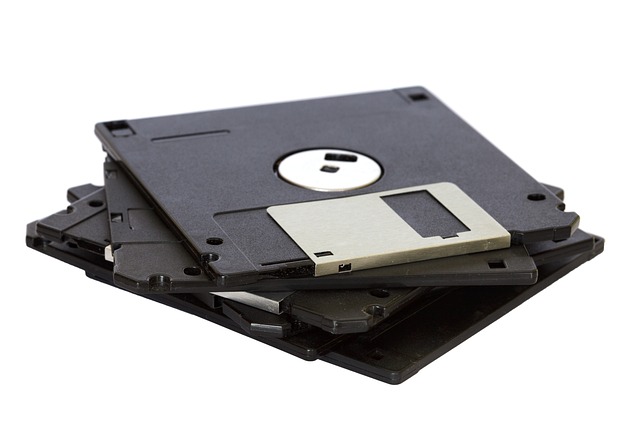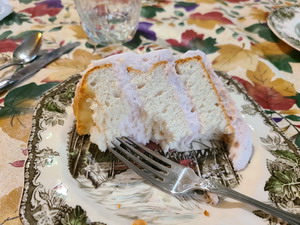 I have been bumping up against this challenge in lots of folks lately. Most recently I went up to my mother’s house to help her celebrate her 93rd birthday. Her older sister, Sylvia, was there as well. I had brought up dinner and a keto angel food cake for the occasion. In the two hours I was there, Sylvia thanked me 15 or 20 times for bringing the food and cake. Sylvia has dementia. My mom is headed down that same street. I am doing many things to try to slow that course of events down as much as possible. I thought I would share some of the things she is trying to halt the degeneration of her memory, as I have noticed many of my patients are also starting to become forgetful.
I have been bumping up against this challenge in lots of folks lately. Most recently I went up to my mother’s house to help her celebrate her 93rd birthday. Her older sister, Sylvia, was there as well. I had brought up dinner and a keto angel food cake for the occasion. In the two hours I was there, Sylvia thanked me 15 or 20 times for bringing the food and cake. Sylvia has dementia. My mom is headed down that same street. I am doing many things to try to slow that course of events down as much as possible. I thought I would share some of the things she is trying to halt the degeneration of her memory, as I have noticed many of my patients are also starting to become forgetful.
 About fifteen years ago I had a significant memory problem. Ellen and my kids would laugh at how bad it was. My ability to form new memories had gotten lost on the way to the store somehow. In fact, that was one of the earliest signs — going to the store. I would go with a shopping list of only three items, and end up forgetting to purchase two of the items. I have never been good with names, but back then I would even forget people I had known forever. Fortunately, I was tapped into some cutting-edge work on autoimmune disease through seminars I was taking, and this showed me what was behind my memory issues. A newly formed lab named Cyrex was able to test me for sensitivity to gluten, leaky gut, Hashimoto’s thyroiditis, and a host of other tissue auto-antibodies my blood was showing. I had it all and it was messing up my memory big time. That was when I swore off gluten in any form and started to work on my leaky gut. This was a slow process, but gradually my symptoms settled down and my memory returned.
About fifteen years ago I had a significant memory problem. Ellen and my kids would laugh at how bad it was. My ability to form new memories had gotten lost on the way to the store somehow. In fact, that was one of the earliest signs — going to the store. I would go with a shopping list of only three items, and end up forgetting to purchase two of the items. I have never been good with names, but back then I would even forget people I had known forever. Fortunately, I was tapped into some cutting-edge work on autoimmune disease through seminars I was taking, and this showed me what was behind my memory issues. A newly formed lab named Cyrex was able to test me for sensitivity to gluten, leaky gut, Hashimoto’s thyroiditis, and a host of other tissue auto-antibodies my blood was showing. I had it all and it was messing up my memory big time. That was when I swore off gluten in any form and started to work on my leaky gut. This was a slow process, but gradually my symptoms settled down and my memory returned.
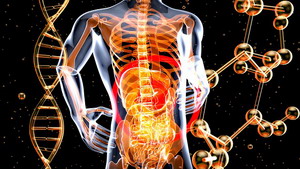 So, this is the first point to consider in the fight to retain our memories. Is there an active disease process causing memory loss? In my case there was and I was able to reverse it. A leaky gut causes a leaky brain, and a leaky brain does not work well. Leaky brains let all sorts of stuff across the blood-brain barrier that is not supposed to get into the brain. When that happens it activates the glial immune cells in the brain to attack and neutralize these foreign substances. Unfortunately, once this happens once, the glial cells change into an armed and ready state just waiting for the next wave of substances. This is called glial priming. The same thing happens after a concussion. When a second concussion or a second wave hits, these primed glial cells go into full crazy killer mode and start attacking everything around, including your good guy brain cells. This state is what causes most brain inflammation, and most brain disorders are directly caused by brain inflammation. This includes Parkinson’s and Alzheimer’s as well as a long list of other conditions.
So, this is the first point to consider in the fight to retain our memories. Is there an active disease process causing memory loss? In my case there was and I was able to reverse it. A leaky gut causes a leaky brain, and a leaky brain does not work well. Leaky brains let all sorts of stuff across the blood-brain barrier that is not supposed to get into the brain. When that happens it activates the glial immune cells in the brain to attack and neutralize these foreign substances. Unfortunately, once this happens once, the glial cells change into an armed and ready state just waiting for the next wave of substances. This is called glial priming. The same thing happens after a concussion. When a second concussion or a second wave hits, these primed glial cells go into full crazy killer mode and start attacking everything around, including your good guy brain cells. This state is what causes most brain inflammation, and most brain disorders are directly caused by brain inflammation. This includes Parkinson’s and Alzheimer’s as well as a long list of other conditions.
 The big message here regarding memory is that anything we do is going to be ultimately focused on reducing brain inflammation. Message number two is that if the gut is inflamed, then so is the brain. The same story is also true for lung tissue. When the lungs are compromised, the brain becomes compromised. What you eat, drink, and breathe all have a direct effect on how well your brain functions. Many studies have demonstrated decreased intelligence and impulse control in folks living close to primary traffic ways, smog and poor air quality, and even increased lung irritation caused by using excess air fragrances in the house.
The big message here regarding memory is that anything we do is going to be ultimately focused on reducing brain inflammation. Message number two is that if the gut is inflamed, then so is the brain. The same story is also true for lung tissue. When the lungs are compromised, the brain becomes compromised. What you eat, drink, and breathe all have a direct effect on how well your brain functions. Many studies have demonstrated decreased intelligence and impulse control in folks living close to primary traffic ways, smog and poor air quality, and even increased lung irritation caused by using excess air fragrances in the house.
 So what am I doing to help my mom? I had genetic testing that showed I carry the genes that make me sensitive to gluten. I got those from her, so that means I had to take her off gluten as well. Gluten is a gut irritant for everybody, but much more so if you have gluten-sensitivity genes. Fortunately, I don’t have the genetic variant that produces actual celiac disease, but the sensitivity is bad enough.
So what am I doing to help my mom? I had genetic testing that showed I carry the genes that make me sensitive to gluten. I got those from her, so that means I had to take her off gluten as well. Gluten is a gut irritant for everybody, but much more so if you have gluten-sensitivity genes. Fortunately, I don’t have the genetic variant that produces actual celiac disease, but the sensitivity is bad enough.
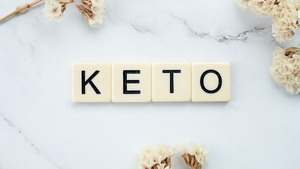 The next step is reducing inflammation by changing the fuel source for her brain. As I have written previously, our cells run on three different fuel sources: sugar, fats, and ketones made from fats. Sugar burns hot and produces massive amounts of inflammatory byproducts, also called free radicals, as it is used to produce energy. In the brain, fat does the same thing. Ketones, on the other hand, produce the same energy but with much less inflammation as a result. This is what your brain burns when you are on a keto diet, ketones. So, I have my mom on a keto diet most of the time. A keto diet is best for those with diabetes, and Alzheimer’s is called diabetes type three, or brain diabetes. The answer to brain diabetes is the same as the answer to systemic type two diabetes — a keto diet is where you start. This is tough to do initially, as the brain blood sugar problem makes the person crave sugar all the more. The brain has become resistant to sugar because of all the inflammation it is producing, so now the brain is starving for sugar to produce the energy it needs to function normally. The answer to this dilemma is to switch over to burning ketones from fats for energy.
The next step is reducing inflammation by changing the fuel source for her brain. As I have written previously, our cells run on three different fuel sources: sugar, fats, and ketones made from fats. Sugar burns hot and produces massive amounts of inflammatory byproducts, also called free radicals, as it is used to produce energy. In the brain, fat does the same thing. Ketones, on the other hand, produce the same energy but with much less inflammation as a result. This is what your brain burns when you are on a keto diet, ketones. So, I have my mom on a keto diet most of the time. A keto diet is best for those with diabetes, and Alzheimer’s is called diabetes type three, or brain diabetes. The answer to brain diabetes is the same as the answer to systemic type two diabetes — a keto diet is where you start. This is tough to do initially, as the brain blood sugar problem makes the person crave sugar all the more. The brain has become resistant to sugar because of all the inflammation it is producing, so now the brain is starving for sugar to produce the energy it needs to function normally. The answer to this dilemma is to switch over to burning ketones from fats for energy.
 What else can we do to support the brain for memory? Memory is an energy-intensive process, so anything else we can do to support energy production in the brain as well as decrease inflammation is going to help with memory. Toward this end, my mom is using infrared radiation/light exposure to her brain to decrease inflammation and increase energy production. Pioneering work in this arena has been performed in England using infrared helmets to energize patients’ brains. Much as we use infrared light to treat skin and ligament injuries in the office, the same idea can be used on the brain. The main difference is the brain is protected by the skull, so you have to use wavelengths of light that will penetrate the skull. The best wavelengths are those that are well below the visible spectrum, so you can’t see them with the naked eye. In my mother’s case, I bought a special brain helmet with hundreds of tiny LEDs built in that enabled us to try different frequencies of light. This was fairly expensive but much less than the $8000 for the unit made in England. For a typical patient, I would recommend simply using a 250-watt heat lamp bulb. Those are available for about $20. Approximately 80% of what the heat lamp produces is not what is useful, but the remaining 20% gives you about 50 watts of light at a usable wavelength. Just point it at your head and relax until it gets too warm.
What else can we do to support the brain for memory? Memory is an energy-intensive process, so anything else we can do to support energy production in the brain as well as decrease inflammation is going to help with memory. Toward this end, my mom is using infrared radiation/light exposure to her brain to decrease inflammation and increase energy production. Pioneering work in this arena has been performed in England using infrared helmets to energize patients’ brains. Much as we use infrared light to treat skin and ligament injuries in the office, the same idea can be used on the brain. The main difference is the brain is protected by the skull, so you have to use wavelengths of light that will penetrate the skull. The best wavelengths are those that are well below the visible spectrum, so you can’t see them with the naked eye. In my mother’s case, I bought a special brain helmet with hundreds of tiny LEDs built in that enabled us to try different frequencies of light. This was fairly expensive but much less than the $8000 for the unit made in England. For a typical patient, I would recommend simply using a 250-watt heat lamp bulb. Those are available for about $20. Approximately 80% of what the heat lamp produces is not what is useful, but the remaining 20% gives you about 50 watts of light at a usable wavelength. Just point it at your head and relax until it gets too warm.
 Another interesting tool is the use of specific frequencies of sound and light that trigger the brain to start cleaning out plaques that contribute to memory problems. The specific frequency that causes this is 40 hertz. Studies have demonstrated improved cognition and memory in those using these lights for about an hour each day. Ellen has one set up at her desk, so it can stimulate her brain while she is working at her computer. Here is a link to where you can get one. If you would like to experience this now, there are videos on youtube that entrain your brain to this frequency. Here is one such video. For this to work, you have to listen to this with headphones.
Another interesting tool is the use of specific frequencies of sound and light that trigger the brain to start cleaning out plaques that contribute to memory problems. The specific frequency that causes this is 40 hertz. Studies have demonstrated improved cognition and memory in those using these lights for about an hour each day. Ellen has one set up at her desk, so it can stimulate her brain while she is working at her computer. Here is a link to where you can get one. If you would like to experience this now, there are videos on youtube that entrain your brain to this frequency. Here is one such video. For this to work, you have to listen to this with headphones.
 The last big piece I am using with my mom concerns a type of brain fertilizer called BDNF. This is a chemical produced in the brain that causes the brain to form new brain cells and cell connections. There are many things that can stimulate the production of BDNF, but the two strongest are exercise and fasting. A paper was published just this month looking at different types of exercise affecting BDNF release, and interval training was 5 to 6 times more effective than sustained exercise. What that says is that exercising as hard as you can for 40 seconds six times a day was highly effective while moderate continuous exercise for 40 minutes each day had almost no effect. In this case, the study was using stationary bicycles as their exercise tool, but you could use a rebounder, an elliptical trainer, calisthenics, or even just running around the block to achieve this effect. The key is pushing the exercise to the point that you end up breathing too heavily to talk.
The last big piece I am using with my mom concerns a type of brain fertilizer called BDNF. This is a chemical produced in the brain that causes the brain to form new brain cells and cell connections. There are many things that can stimulate the production of BDNF, but the two strongest are exercise and fasting. A paper was published just this month looking at different types of exercise affecting BDNF release, and interval training was 5 to 6 times more effective than sustained exercise. What that says is that exercising as hard as you can for 40 seconds six times a day was highly effective while moderate continuous exercise for 40 minutes each day had almost no effect. In this case, the study was using stationary bicycles as their exercise tool, but you could use a rebounder, an elliptical trainer, calisthenics, or even just running around the block to achieve this effect. The key is pushing the exercise to the point that you end up breathing too heavily to talk.
 Fasting is another tool for increasing BDNF when the fasting is carried on for three or more days. A 20-hour fast has been shown to have almost zero effect, much like moderate exercise. With my mother, I have her do a fast mimicking diet for 5 days each month. Fasting also has the added benefit of promoting autophagy, which is sending the garbage cleaners in the brain to eat up the plaques messing with the memory process. A fast mimicking diet like I use with my mom begins with her being in ketosis first, meaning she has to be strictly on a keto diet for a good week first. Then she shifts to a diet of low-carb veggies in soups and salads plus shiitake zero-carb noodles and electrolyte broth for 4 to 5 days. She eats no higher carbs, no proteins, no polyunsaturated fats, and minimal monosaturated fats in the form of olive oil dressing on her salads. She is basically eating lots of fiber and not much else. During the rest of the month, she is on a high protein diet plus pure amino acids to boost her muscle mass, as this is a major concern for the aged population as well. The fasting actually helps her muscle mass by increasing her growth hormone production for about a week after the fast.
Fasting is another tool for increasing BDNF when the fasting is carried on for three or more days. A 20-hour fast has been shown to have almost zero effect, much like moderate exercise. With my mother, I have her do a fast mimicking diet for 5 days each month. Fasting also has the added benefit of promoting autophagy, which is sending the garbage cleaners in the brain to eat up the plaques messing with the memory process. A fast mimicking diet like I use with my mom begins with her being in ketosis first, meaning she has to be strictly on a keto diet for a good week first. Then she shifts to a diet of low-carb veggies in soups and salads plus shiitake zero-carb noodles and electrolyte broth for 4 to 5 days. She eats no higher carbs, no proteins, no polyunsaturated fats, and minimal monosaturated fats in the form of olive oil dressing on her salads. She is basically eating lots of fiber and not much else. During the rest of the month, she is on a high protein diet plus pure amino acids to boost her muscle mass, as this is a major concern for the aged population as well. The fasting actually helps her muscle mass by increasing her growth hormone production for about a week after the fast.
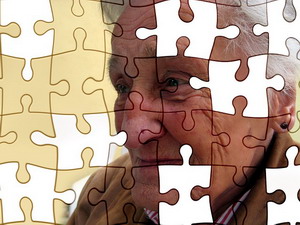 Well, that about covers what I am doing with mom. If there were other health concerns or toxicity issues, these would have to be addressed as they will affect memory as well. My personal example demonstrated this. It may seem like protecting memory is a lot of effort, but what is the point of living if you have no memory to the point that you don’t remember what you thought, felt, or did five minutes ago? The big takeaway from this article is that you can fight back. There are things you can do to keep your memory from slipping away.
Well, that about covers what I am doing with mom. If there were other health concerns or toxicity issues, these would have to be addressed as they will affect memory as well. My personal example demonstrated this. It may seem like protecting memory is a lot of effort, but what is the point of living if you have no memory to the point that you don’t remember what you thought, felt, or did five minutes ago? The big takeaway from this article is that you can fight back. There are things you can do to keep your memory from slipping away.
Take care,
David
